Ultimate Guide to Shotgun Barrels : Everything You Need to Know
Shotguns really are an awesome type of firearm – they can be used for bird hunting, deer hunting, home defense, tactical scenarios, and target shooting (both clay targets and tactical-style action shooting). Even better, if you’re on a budget, the very same shotgun can be used for each and every one of these purposes by changing only one part: the shotgun’s barrel.
For example, for well under $400, a Remington 870 Express with a 28″ vent rib barrel can make a fine bird hunting and clay target shooting shotgun. If you simply change the barrel to an 18″ 870 Police Shotgun Barrel with iron sights, that same 870 shotgun can now be used for home defense, tactical scenarios, and tactical-style action shooting competitions (3-gun shooting matches). Although the short 18″ barrel with iron sights could be used for deer hunting, a rifled shotgun barrel with a scope mount would work even better.
As you can see, by simply changing a shotgun’s barrel, its utility can be greatly expanded. The same simply can’t be done with rifles or handguns.
In this guide about shotgun barrels, we’re going to explore:
- Shotgun Barrel Differences
- Shotgun Barrel Gauges
- Shotgun Barrel Lengths
- Shotgun Barrel Chokes
- Rifled vs Smooth Shotgun Barrels
- Best Shotgun Barrels for Bird Hunting
- Best Shotgun Barrels for Home Defense
- Best Shotgun Barrels for Deer Hunting
Shotgun Barrel Differences
There are some big differences in shotgun barrels that make some shotgun barrels unsuitable for certain tasks. Also, certain type and brand of shotgun barrels are only compatible with certain types and brands of shotguns.
Let’s explore the differences in shotgun barrels first by the actual shotgun barrel itself (the shotgun barrels characteristics) and next by the type of shotgun a shotgun barrel is meant for.
Shotgun Barrel Characteristics
The easiest way to divide shotgun barrels is into barrels that are smooth on the inside and barrels that are rifled.
Smooth shotgun barrels, the VAST majority of shotgun barrels, are meant to shoot “shot.” No, I didn’t mistake verb tenses there. The pellets in a shotgun shell are collectively referred to as “shot” which can get a bit confusing if you’re new to shotguns. For example? “Did you shoot the shot?” “Yes, I shot the shot.” “But what about the next shot? Will you shoot the shot on the next shot too?” I digress.
Rifled barrels, on the other hand, have spiral cut grooves called “rifling” which impart spin on a projectile. We’ll explore the difference between smooth and rifled shotgun barrels below.
The next distinction in shotgun barrels has to do with the barrel’s diameter. A shotgun barrel of a certain diameter can only shoot shotgun shells meant for that diameter. This Is referred to as a shotgun’s “gauge” and is explored below.
The next distinction in shotgun barrels we’ll cover is length.
Standard shotguns have barrels that range from 18 inches to up to 32 inches in length. More length does not necessarily mean more accuracy. Instead a longer shotgun barrel does make it somewhat easier to aim in some situations but a longer barrel is really helpful in achieving a consistent shot-pattern and for some mass to help for a smooth swing when shooting flying targets. Shorter barrels, on the other hand, are more useful in tactical scenarios because of their compact size. More on shotgun barrel length below.
The last shotgun barrel distinction to cover here is the style of the shotgun barrel which is largely dictated by the type of shotgun the barrel belongs to.
For example, an over and under shotgun barrel is really two barrels, one affixed above the other, and can only be used on the particular make/model over and under shotgun for which the barrel is designed. A side-by-side shotgun barrel is also two barrels connected as one but with a side to side orientation rather than an up and down. Pump action shotguns, semi-auto shotguns, and single shot shotguns all have single shotgun barrels.
There are also variations in shotgun barrel based on external features like the shotgun barrel’s finish (e.g. high polish blued steel vs parkerized) or attachments like a vent rib which aid in aiming or variations in sights like bead sights for flying targets versus irons sights or scope mounts for ground targets. Also, shotgun chokes can either be fixed or changeable.
Shotgun Barrel Gauges
Shotguns shoot a particular “gauge” of shotgun shell whereas rifles shoot a certain caliber. If you’d like to learn more about the difference between gauge and caliber, check out our article on Gauge vs Caliber. The one exception to this rule is a .410 caliber shotgun. Of course there has to be an exception.
Simply, a caliber is the nominal diameter of the bore. Therefore, the inside of a 410 shotgun’s barrel is about 0.410″. However, gauge is completely different. With a shotgun’s gauge, the larger the number, the smaller the barrel. For example, the most popular shotgun gauges (and some of these are relatively rare) from BIGGEST to SMALLEST are:
- 10 Gauge (biggest)
- 12 Gauge
- 16 Gauge
- 20 Gauge
- 28 Gauge (smallest)
Note, 28 gauge is the smallest “gauge” whereas a 410 shotgun is even smaller but it’s not technically a “gauge.”
This inverse relationship between size of the number and size of the object is common amongst things measured in gauge (e.g. electrical wire). For shotguns, the number value for gauge is the number of lead balls that diameter it would take to equal one pound. It takes fewer (10) of the larger balls to equal a pound, but it takes more (20) smaller balls to make a pound.
| Shotgun Gauge | Bore Diameter (in) | Bore Diameter (mm) |
|---|---|---|
| 10 Gauge | .775" | 19.69mm |
| 12 Gauge | .725" | 18.42mm |
| 16 Gauge | .665" | 16.89mm |
| 20 Gauge | .615" | 15.62mm |
| 28 Gauge | .545" | 13.84mm |
| .410 bore | .410" | 10.41mm |
The most popular shotgun gauge is “12 gauge.” A 12 gauge shotgun can only shoot 12 gauge shotgun shells and except for certain over and under shotguns, the gauge of a shotgun can not be changed by simply swapping the shotgun’s barrel. This is because pump-action and semi-auto shotguns have a particular size bolt face and extractor that must be able to both feed and extract and eject a shell. Also, the magazine tubes on these shotguns are only meant for a certain diameter shell.
In addition to the shotgun’s gauge, there is also technically a chambering as well. This is a safety issue, so pay attention!
Shotguns are made to a accept shotgun shells of a particular gauge AND length. Older 12 gauge shotguns were designed to take 2 3/4″ shells. These shells are your standard shotgun shells and are popular for target shooting and light hunting purposes like quail, dove, and pheasant.
In a search for more power and pellets, 3″ shells came about. These magnum loads are ideal for turkey and duck hunting. However, they may ONLY be shot safely out of a shotgun that has a barrel marked for 3″ shells. Most often, the markings on the shotgun barrel will be something like this: 2 3/4″ or 3″. Be careful about putting a 3″ chambered barrel on an older receiver that was only designed for 2 3/4″ shells – it may not be strong enough.
Of course, we didn’t stop with 3″, there are also even more powerful 3 1/2″ shells. These super magnum shotgun shells, like the 3″ options above” must only be fired out of a barrel marked for 3 1/2″ shells. These markings typically read: 2 3/4, 3, or 3 1/2″. However, sometimes the barrel will just read 3 1/2″, however, it is always safe to shoot a shell shorter than what is listed… never longer.
As a personal note, I think 3 1/2″ shells are pointless. Through some awesome scientific testing I’ve seen with doppler radar and feedback from professional shooters which I place a lot of trust, 3″ shells outperform 3 1/2″ shells with better shot patterns. The 3 1/2″ extra power seems like a good thing until you realize that the extra power can make for some horrible patterns and won’t make up for bad shooting.
The same is true for 20 ga. 2 3/4″ shells are the norm. However, 3″ shells exist for those wanting more power and should only be shot out of 20 ga shotguns marked for 3″ shells. Again, in my personal opinion, these extra power shells are not a good idea. This is not because of safety concerns but rather, 3″ 20ga shells are well known (for those in the know) for being horrible performers where it really counts (hitting the target)…. their patterns are almost always horrible. There’s something to be said for pushing something too far.
12 gauge is a great all around solution. However, smaller shooters may prefer 20 or 28 gauge (and even bigger shooters like these for hunting). There’s plenty to consider if you’re unsure of which gauge to use.
General purpose (bird, deer, home defense)? Get a 12 gauge.
Want a more “sporting option” or less recoil? Get a 20 gauge or 28 gauge. Just be aware that ammo will be more rare and more expensive. Also, it isn’t always true that a 20 gauge kicks less than a 12 gauge. Yes, it is a smaller shell, but target loads for each are very similar (about the same amount of lead leaving a the same velocity) and the 20 gauge is a lighter gun so it will have more felt recoil. I think 20 gauges are better for smaller shooter not because of less “kick” but rather because the gun is often smaller and lighter to manipulate.
Shotgun Barrel Lengths
The length of a shotgun’s barrel has legal and performance implications.
In order to be classified as a “standard” firearm and not subject to extra federal controls, a shotgun’s barrel must be at least 18″ long. If the barrel for a shotgun is under 18″ in length, then it is considered a “short barreled shotgun” and is thereby regulated by the National Firearms Act of 1934 (NFA) and is subject to special registration and taxes.
However, a firearm that shoots shotgun shells can still have a barrel less than 18″ and not be a specially regulated NFA firearm. Pistol grip only “shotguns” are more and more popular and are not technically “shotguns” because they don’t have a buttstock. So, a Remington 870 with a buttstock is a shotgun and needs a barrel at least 18″ long in order to not be a “short barreled shotgun” whereas a Remington 870 without a buttstock (from the factory) can have a barrel less than 18″ long.
I have seen no significant performance difference of the payload from a shotgun based on barrel length. Unlike with rifles, shorter shotgun barrels do not see a significant decrease in velocity. This is because the power of a shotgun shell reaches most of its potential well before the shot is halfway down a regular barrel whereas a rifle is designed to continue to build pressure throughout the length of the barrel.
Where barrel length affects performance is in the balance of a shotgun and its resulting “swing.” Longer barrels have more weight out front and therefore have a steadier “swing” to them. Shorter barrels can be moved quicker but they can be a bit “jerky” in their swing.
If I’m hunting, I like a 26″ barrel so that I can carry the shotgun easier and swing it faster. If I am shooting clay targets, I like a 30 or 32″ barrel so that I have a smooth swing.
Some shotguns come with two barrels – one for hunting and one for home defense. Shotguns with interchangeable barrels are very handy in this way. Unlike a rifle, a shotgun’s barrel can usually be quickly changed depending on the situation and this is a big reason why shotguns are so popular as “all-around” firearms.
Shotgun Barrel Chokes
The “choke” of a shotgun barrel is the amount of constriction it applies to the shot as it leaves the barrel. Tighter chokes result in tighter patterns of shot.
Each shotgun manufacturer has their own unique choke system (there is some overlap). For example, chokes for different shotguns can be different lengths, have different thread rates, and even different thread locations (top vs bottom of choke). You must ensure that you are purchasing the correct choke for your particular barrel.
The amount of constriction applied by each choke is consistent based on the starting diameter of the chamber (some manufacturers have larger chambers). Therefore, a “full” choke will have the same amount of constriction based on the shotgun’s chamber, however, two different manufacturer’s “full” chokes may have slightly different measurements from each other.
The first shotgun barrels were straight tubes. This is called “cylinder” choke. Later, manufacturers made the ends of the barrels slightly tighter for tighter shot patterns and this was call a “modified” choke and for more restriction it was called a “full” choke.
Then, variations between these constrictions were created with a somewhat confusing naming convention until you think about the reasoning. If a standard (at the time) choke was made a bit tighter, it was called “improved.” And, if it was a bit more open, it was called “light.”
So, a shotgun with no restriction is cylinder but once with slightly more restriction is called “improved cylinder.” A shotgun with a medium amount of choke (at the time) was called “modified” so slightly less than “modified) (but still more than improved cylinder) is called “light modified.”
Of course, it can’t be that easy. There are also a couple of chokes (skeet and turkey) that are named for their particular use. The former is for shooting skeet (a specific game of shooting calls and not shooting clay targets in general) and the latter is for ultra tight patterns for hunting turkey.
Here’s a breakdown of choke sizes and their relative restrictions. As you can see, this is an American system in that the jump from one size to the next (in most cases) is an additional 0.005″ of constriction.
| Shotgun Choke | Constriction (in) | Constriction (mm) |
|---|---|---|
| Cylinder | 0" | 0.00 mm |
| Skeet | 0.005" | 0.13 mm |
| Improved Cylinder | 0.01" | 0.25 mm |
| Light Modified | 0.015" | 0.38 mm |
| Modified | 0.02" | 0.51 mm |
| Improved Modified | 0.025" | 0.635 mm |
| Full | 0.03" | 0.76 mm |
| Extra Full | 0.04" | 1.015 mm |
| Turkey | 0.045" | 1.145 mm |
All else being equal, a cylinder choke will have about 40% of the pellets inside of a 30 inch circle at 40 yards. A tighter modified choke will have about 60% of the pellets in the same circle and a full choke with have about 70% of the pellets.
These are rough approximations and will vary greatly depending on the shell, shotgun and brand of chokes being used. Yes, some brands of choke work better for some shells and shotguns.
Here’s the hard truth – shotgun chokes don’t matter that much in most circumstances. Yes, they have an effect, however, if you’re shooting at clay targets and you miss the target, it is because you missed the target and not because you were using a modified choke instead of an improved modified choke.
Shotgun chokes can either be flush with the end of the barrel or extended. I prefer the extended because they are easier for me to hand tighten. However, some prefer flush chokes because they look “better” to them. Whatever you use, be sure the choke is snug BEFORE loading and shooting – a loose choke can make for a bad day.
You will need to learn your manufacturer’s marking system for identifying chokes (typically grooves or notches cut into the choke).
Fixed Shotgun Chokes vs Changeable Shotgun Chokes
Older shotguns were typically fixed chokes meaning the barrel itself was made to a certain choke and couldn’t be changed. It is hard to find a modern shotgun that doesn’t have interchangeable chokes. In fact, my father’s old Remington 1100 shotgun was a fixed modified barrel and I ordered and installed a replacement barrel so that I could change chokes (I use a modified or improved modified for trap shooting, an improved cylinder for skeet shooting, a light modified for sporting clays, and turkey for, you guessed it, turkey hunting).
If you’re going to shoot steel shot or slugs, please ensure that you aren’t using too tight of a choke as you can damage your shotgun.
If you’re looking for more details, you can learn more about chokes here.
Rifled vs Smooth Shotgun Barrels
Smooth barrels are the standard shotgun barrel to such a degree that the legal definition of a shotgun includes a smooth barrel. In fact, a rifled barrel makes a shotgun a rifle under federal law but it’s a distinction that nobody really seems to care about but me.
Rifled shotgun barrels are meant to shoot shotgun slugs. A slug is a solid chunk of material as opposed to multiple projectiles with shot. Smooth barrels can shoot slugs too, however, rifled barrels are typically more accurate.
If you’re only going to have one barrel and/or one shotgun, get a smooth barrel. A rifled barrel is a specialty option.
Best Shotgun Barrels for Bird Hunting
Shotgun barrels for bird hunting are longer smooth barrels and often have a vent-rib (a flat piece on the top of the barrel running its full length) and a bead for aiming.
There’s no perfect answer here for everyone – you might like one option more or less than me. However, it is safe to say that somewhere around 26″ or 28″ is the length of most bird hunting barrels and if you walk into a gun shop, most of the shotguns will be set up for bird hunting from the factory.
Here are some good options for bird hunting barrels. Make sure you get a barrel made for your particular shotgun.
Best Shotgun Barrels for Home Defense
When it comes to home defense, shorter is better! 18″ shotgun barrels are ideal (unless you want to go through the hassle of registering a “short barreled shotgun”).
One thing to keep in mind with a shotgun is that most shotguns hold their shells in a magazine under the barrel stacked end to end. Therefore, the shorter the shotgun, the less capacity it can hold. With an extended magazine tube to the end of an 18″ can usually hold 6 or 7 shotgun shells plus one in the chamber.
If you bought a “standard” shotgun set up for bird hunting and want to use the same shotgun for home defense, you can easily swap out to your shorter home defense barrel when you return from your hunting trip. You might also be adding your magazine extension if you have one as most states have capacity limits for hunting.
Here are some great options for home defense shotgun barrels. Make sure you get a barrel made for your particular shotgun.
Best Shotgun Barrels for Deer Hunting
If you are getting a shotgun barrel specifically for deer hunting, you should consider a rifled barrel for slugs. It is NOT necessary as modern slugs shoot surprisingly well out of smooth barrels and you can always make use of the large pellets in buck shot (named after it’s design intention for shooting “bucks”).
Deer-hunting specific barrels often have rifle-style iron sights or a mount for an optic due to their use as “aiming” instead of “pointing” style of shooting.
Here are some good options for deer hunting barrels. Make sure you get a barrel made for your particular shotgun.
If you select a barrel with an optic mount, I encourage you to consider getting a red-dot sight with no magnification as it’ll be easier to use quickly in the field. Yes, a magnified optic can help you with accuracy when shooting at paper, but a shotgun is a close range tool and the magnification is not only not needed, they can be harder to use in some situations.
When it comes to red-dot sights, you get what you pay for. You don’t need the most expensive option but the cheaper options will not be near as durable nor reliable as you’ll need to withstand the recoil of a shotgun.
Recent Posts
July 26, 2024
July 26, 2024
July 25, 2024

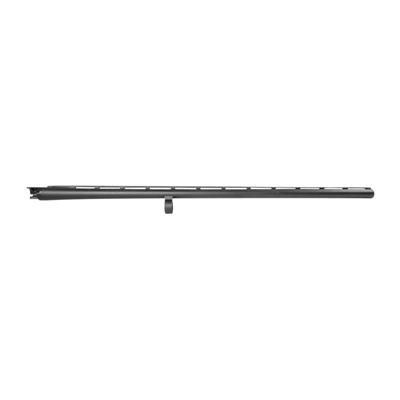
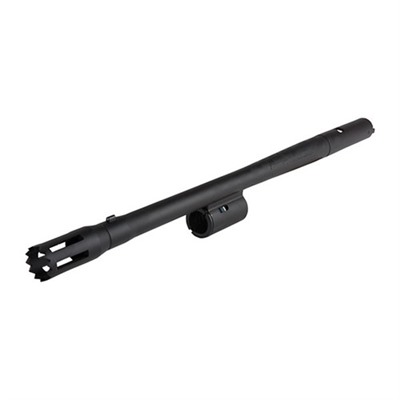
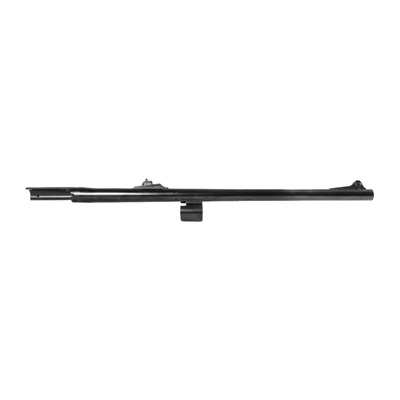
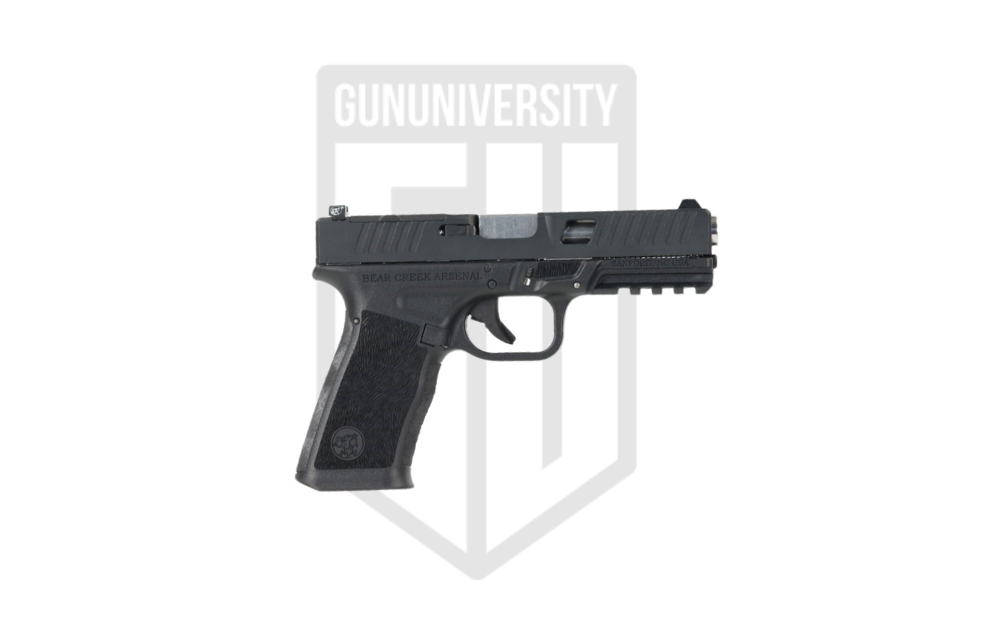
![The Best Shooting Hearing Protection in 2024 [Tested]](https://gununiversity.com/wp-content/uploads/2021/09/best-shooting-hearing-protection.jpg)
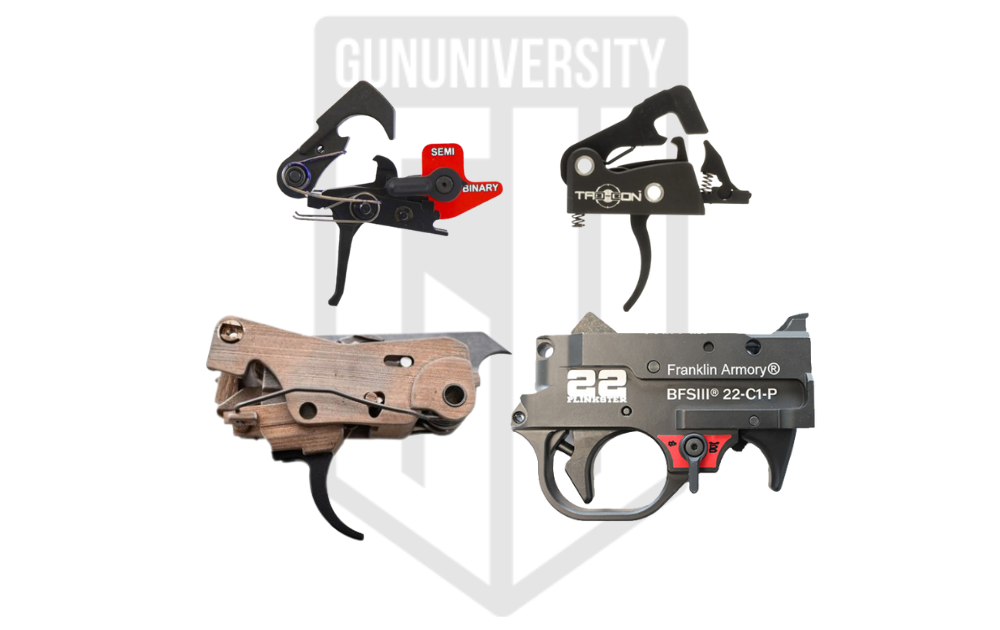
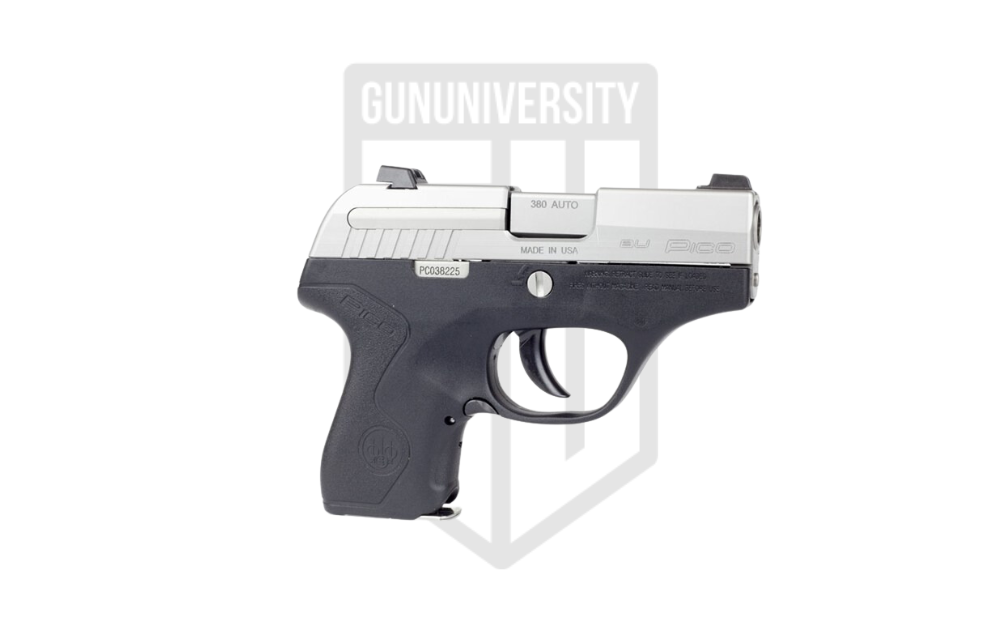
Sir, I want to build a custom single barrel 12 ga 3 in 32 in. turkey choke. I am looking for where I can buy the barrel/receiver group and the stock and forearm blanks with nice wood.
Can you point me to a supplier. I can;t seem to find one